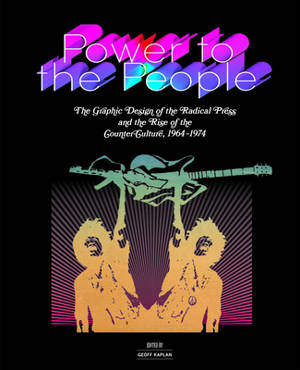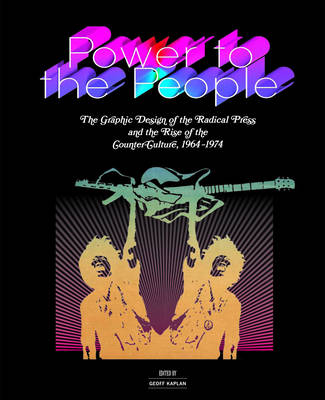
- Retrait gratuit dans votre magasin Club
- 7.000.000 titres dans notre catalogue
- Payer en toute sécurité
- Toujours un magasin près de chez vous
- Retrait gratuit dans votre magasin Club
- 7.000.000 titres dans notre catalogue
- Payer en toute sécurité
- Toujours un magasin près de chez vous
Power to the People
The Graphic Design of the Radical Press and the Rise of the Counter-Culture, 1964-1974
Geoff Kaplan
52,95 €
+ 105 points
Description
Though we think of the 1960s and the early '70s as a time of radical social, cultural, and political upheaval, we tend to picture the action as happening on campuses and in the streets. Yet the rise of the underground newspaper was equally daring and original. Thanks to advances in cheap offset printing, groups involved in antiwar, civil rights, and other social liberation issues began to spread their messages through provocatively designed newspapers and broadsheets. This vibrant new media was essential to the counterculture revolution as a whole--helping to motivate the masses and proliferate ideas. Power to the People presents more than 700 full-color images and excerpts from these astonishing publications, many of which have not been seen since they were first published almost fifty years ago. From the psychedelic pages of the Oracle, Haight-Ashbury's paper of choice, to the fiery editorials of the Black Panther Party Paper, these papers were remarkable for their editors' fervent belief in freedom of expression and their DIY philosophy. They were also extraordinary for their graphic innovations. Experimental typography and wildly inventive layouts reflect an alternative media culture as much informed by the space age, television, and socialism as it was by the great trinity of sex, drugs, and rock 'n' roll. Assembled by renowned graphic designer Geoff Kaplan, Power to the People pays homage in its layout to the radical press. Beyond its unparalleled images, Power to the People includes essays by Gwen Allen, Bob Ostertag, and Fred Turner, as well as a series of recollections edited by Pamela M. Lee, all of which comment on the critical impact of the alternative press in the social and popular movements of those turbulent years. Power to the People treats the design practices of that moment as activism in its own right that offers a vehement challenge to the dominance of official media and a critical form of self-representation. No other book surveys in such variety the highly innovative graphic design of the underground press, and certainly no other book captures the era with such an unmatched eye toward its aesthetic and look. Power to the People is not just a major compendium of art from the '60s and '70s--it showcases how the radical media graphically fashioned the image of a countercultural revolution that still resounds to this day.
Spécifications
Parties prenantes
- Auteur(s) :
- Editeur:
Contenu
- Nombre de pages :
- 264
- Langue:
- Anglais
- Collection :
Caractéristiques
- EAN:
- 9780226424354
- Date de parution :
- 15-05-13
- Format:
- Livre relié
- Format numérique:
- Ongenaaid / garenloos gebonden
- Dimensions :
- 259 mm x 310 mm
- Poids :
- 1859 g







